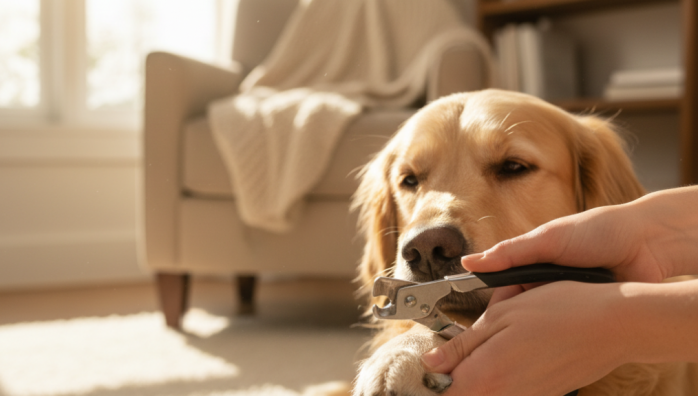Home Nail Trimming for Dogs and Cats
by admin in Pet Care Basics 13 - Last Update November 21, 2025

I still remember the first time I tried to trim my rescue beagle’s nails. It was a disaster. He yelped, I panicked, and we both ended up stressed and covered in styptic powder. For years, I simply outsourced the task to vets or groomers, feeling like a failure. It took time, patience, and a lot of learning, but I eventually discovered that at-home nail trimming doesn\'t have to be a battle. It can be a quiet moment of trust between you and your pet.
Why regular nail care is more than just cosmetic
Honestly, I used to think nail trimming was just about stopping that \'click-clack\' sound on the hardwood floors. But it\'s a fundamental part of their health and wellness. Overly long nails can change the way a dog or cat walks, forcing their weight back onto their paws in an unnatural way. This can lead to joint pain, posture problems, and even arthritis over time. For cats, long nails can get caught in furniture or curl back into their paw pads, which is incredibly painful. Seeing it as a health routine, not just a grooming chore, was a huge mental shift for me.
Finding the right tool for the job
The wall of nail clippers at the pet store can be intimidating. Over the years, I\'ve tried them all. Your choice really comes down to your comfort and your pet\'s nail type.
For dogs
I started with the guillotine-style clippers, but for my dogs with thicker nails, I found the plier-style (or scissor-style) clippers gave me a cleaner cut with less pressure. For pet parents who are nervous about cutting the quick, a nail grinder is a fantastic option. It files the nail down gradually. My advice? Start with the grinder on a low setting and let your dog get used to the sound and vibration by touching it to their body (not the nail) and rewarding them. It desensitizes them to the tool.
For cats
A cat\'s nails are different; they\'re retractable and more delicate. I exclusively use the small, scissor-style clippers designed specifically for cats. They are sharp and precise, allowing for a quick, clean snip of the sharp tip without crushing the nail. Never use dog clippers on a cat, as they are too bulky and can cause damage.
My step-by-step guide to a calmer trim
Patience is the secret ingredient here. This isn\'t a race. My goal is to do one paw, or even just one nail, and end on a positive note. Here\'s the process that works for us:
- Set the mood: I choose a time when my pet is already relaxed, maybe after a nap. I get my tools, some high-value treats, and styptic powder (just in case) ready beforehand.
- Handle the paws: I don\'t start by clipping. For a few days leading up to it, I just gently handle my pet\'s paws while giving them praise and treats. This makes them comfortable with me touching their feet.
- Isolate the nail: For dogs, I hold the paw firmly but gently. For cats, I apply gentle pressure on the top of the paw to extend the nail.
- Locate the quick: This is the nerve and blood supply. On light-colored nails, it\'s the pink part. On dark nails, it\'s almost impossible to see. My rule for dark nails is to only trim the very tip—the thin, curved part. You can always take off more, but you can\'t put it back.
- Snip or grind: I make a quick, decisive snip. A slow squeeze can pinch the nail. If I\'m using a grinder, I work on one nail for a few seconds before moving to the next to prevent heat buildup.
- Reward generously: After every single nail, I give a treat and praise. This builds a positive association. If my pet shows any sign of stress, we stop for the day.
If you do accidentally nick the quick, don\'t panic. It happens to everyone, even professionals. Calmly apply the styptic powder with a bit of pressure, offer your pet a favorite treat, and end the session with some cuddles. And remember, if you or your pet are truly struggling, there is no shame in seeking help from a professional groomer or your vet. Your pet\'s safety and your peace of mind are what matter most.














